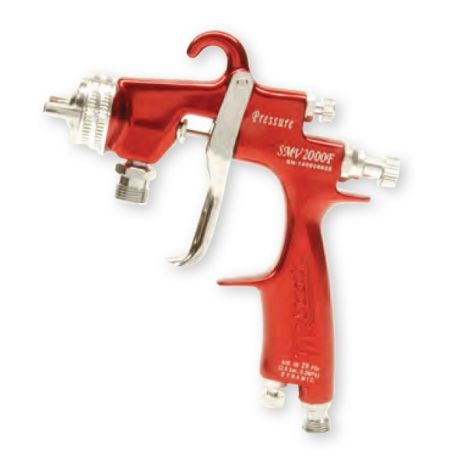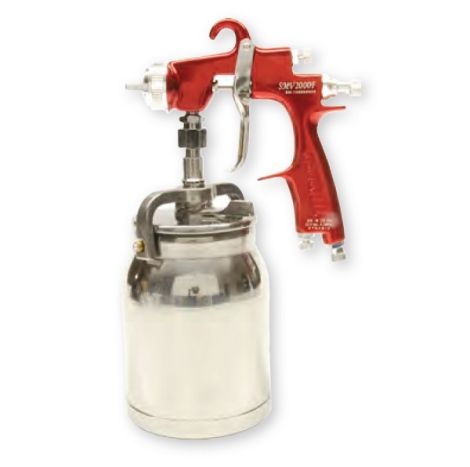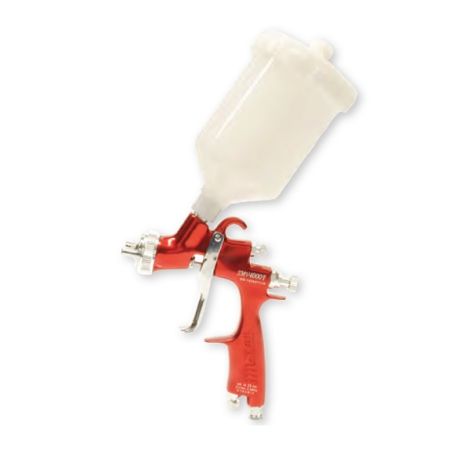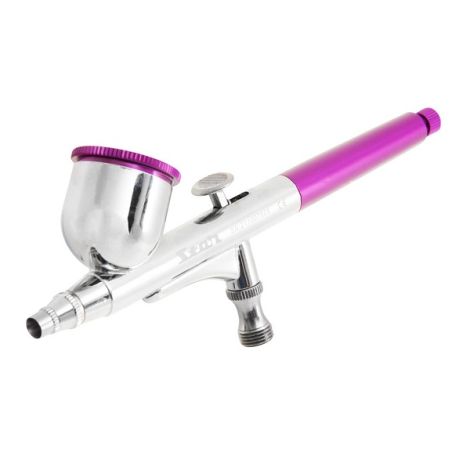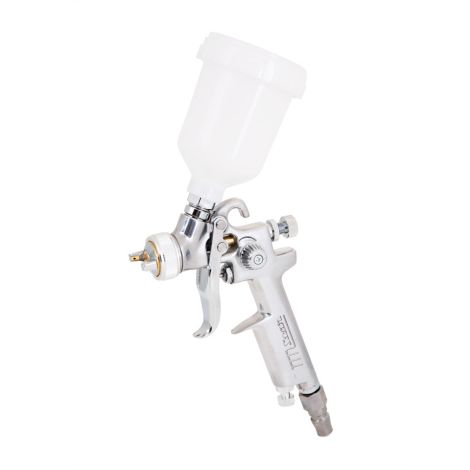AUTOMOTIVE
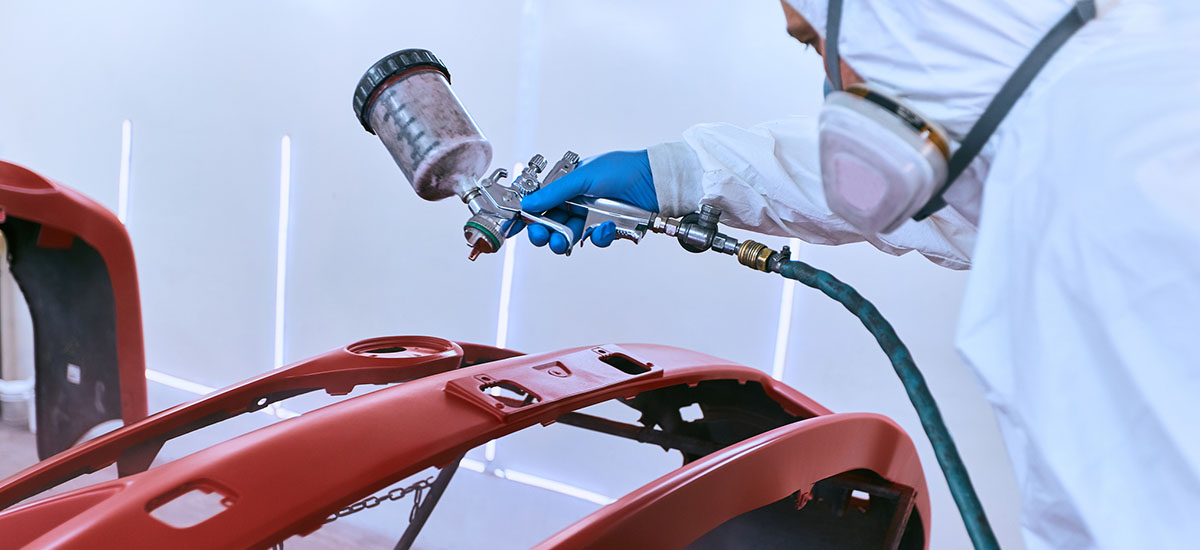
Automotive Spraying Technology
If you're in the automotive industry, you know that achieving a high-quality finish can make or break the final product. That's why many choose to use advanced automotive spraying technology to achieve superior results.
However, the automotive spraying industry is highly competitive. Buyers have access to dozens of suppliers and different types of equipment. Choosing the best tools for your needs can be overwhelming and challenging.
Luckily, this blog can serve as your reference guide. We discuss all you need to know about automotive spray equipment and explain how the right equipment can improve your operations and help you deliver superior finishes every time.
What Are Automotive Spray Guns?
Spray guns atomize and apply paints, varnishes, finishes adhesives and other coatings to surfaces using compressed air. They are crucial for professionals looking to achieve fast, uniform finishes on surfaces. While spray guns have many uses in various industries, they play a significant role in the automotive industry.
Spray guns help achieve high-quality finishes that enhance a vehicle's appearance and durability. This is all thanks to the equipment's inner workings and components. The key parts of a complete system include the following:
Spray guns: These tools atomize paint into fine droplets. The paint droplets help you apply paint and finishes evenly to the vehicle's surface.
Compressors: Compressors provide the necessary air pressure to power the spray guns. They help ensure consistent spray patterns and paint flow.
Hoses: Hoses connect the spray gun to the compressor and help transfer air and paint to the gun.
Nozzles: Nozzles determine the spray pattern and droplet size. They are crucial for achieving a specific desired finish and coverage.
Types of Spray Systems
Various spraying systems have been modified throughout the years. Each type has its applications, advantages and challenges. Let's discuss the five major types.
Air
Also called pneumatic spray guns, air spray guns are the conventional choice. They use high levels of compressed air to atomize paint. They are versatile in their applications but may produce more overspray than newer technologies. While cost-effective and offering a wide range of finishes, they need a skilled operator to control the overspray.
As an alternative to conventional spray guns, HVLP and LVLP guns are newer options.
High Volume, Low Pressure (HVLP)
HVLP guns use a higher air volume at a lower pressure to atomize paint, resulting in less overspray and higher transfer efficiency. They're ideal for detailed work and produce a smoother finish, making them one of the best spray guns for cars. However, they may take more time due to slower application rates.
Low Volume, Low Pressure (LVLP)
LVLP guns operate at even lower pressures, further reducing overspray and material waste. They're ideal for smaller projects and detailed work and offer precise control over paint application. However, they may need more passes to achieve full coverage, increasing application time.
Airless
Airless systems use high pressure to atomize paint without compressed air. They're best for covering large areas, making them suitable for industrial applications. However, they may produce more overspray and need careful technique to avoid uneven coverage.
Air-Assisted
Air-assisted systems combine airless technology with compressed air for finer atomization and better control. They offer high transfer efficiency and are suitable for various coatings. However, they may be more complex to operate and maintain than other systems.
Each type of spray system has unique applications, benefits and challenges. Choosing the right auto paint gun depends on the scale of the project, desired finish quality and operator skill level.
The Evolution of Automotive Spray Guns
The history of automotive spray guns dates back to the early 1900s. Initially, cars were painted manually with brushes, a time-consuming and uneven process. In 1907, Thomas DeVilbiss changed the industry by inventing the first air-powered spray gun. It was quickly adopted for painting the Ford Model T.
The 1930s saw the development of HVLP spray guns, setting a new standard in automotive painting. The 1960s and 1970s brought ergonomic improvements and compliant spray guns to meet new EPA regulations. In the 1980s, the introduction of electronic controls allowed for precise adjustments in paint and airflow.
Today, advancements in fluid dynamics, lightweight composites and computerized controls have refined spray guns. Spraying technology is now essential for achieving high-quality automotive finishes.
Benefits for the Automotive Industry
Automotive companies that use spray guns may experience the following advantages:
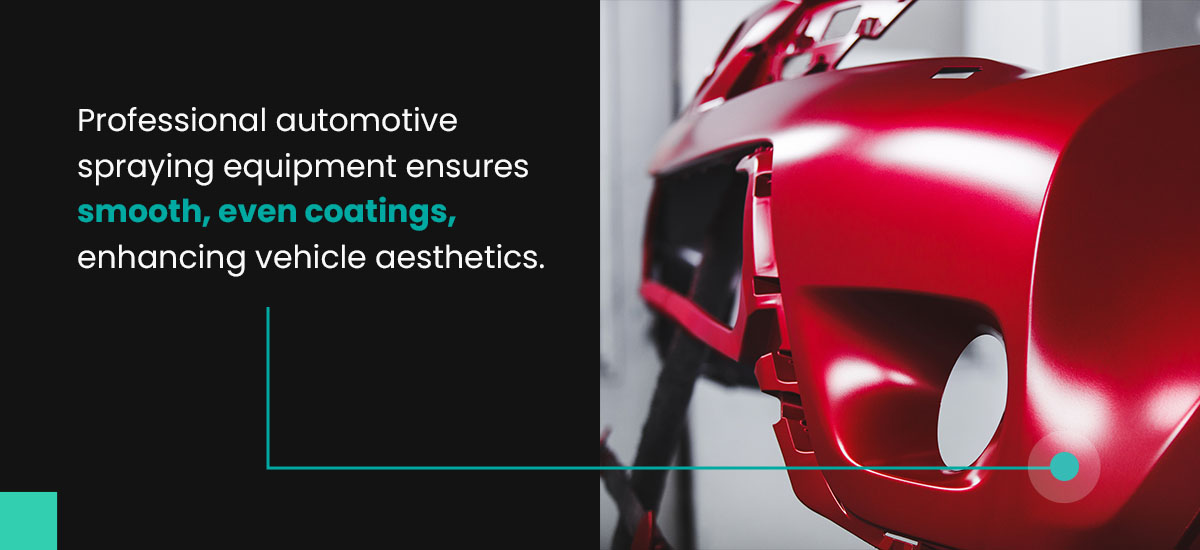
High-quality finishes: Professional automotive spraying equipment ensures smooth, even coatings, enhancing vehicle aesthetics.
Increased efficiency: Advanced spray systems reduce application time, allowing for quicker project turnaround and increased productivity.
Cost savings: Improved transfer efficiency minimizes paint waste, lowering material costs over time.
Durability: Professional-grade equipment delivers consistent, durable finishes that withstand wear and environmental factors.
Versatility: Different types of spray guns accommodate various coatings and finishes. Professionals can use anything from primers to topcoats, meeting diverse project needs.
Reduced overspray: Technologies like HVLP and LVLP help minimize overspray. As such, they can promote a cleaner work environment and less material waste.
Enhanced precision: Modern spray systems offer precise control. This enhanced precision capability ensures detailed work, reducing the need for touch-ups.
Selecting the Right Spray Gun
Various factors influence the choice of the right spray gun. Here are the crucial aspects to keep in mind:
Type of paint: Different spray guns are designed for various types of paint. The types of paint can include water-based, solvent-based or specialty coatings. Ensure the spray gun you choose is compatible with the paint you intend to use.
Spray gun type: Based on your specific needs, decide between conventional, HVLP and LVLP spray guns. Conventional guns offer speed, while HVLP guns provide finer control with less overspray. In contrast, LVLP guns are efficient for smaller jobs.
Nozzle size: The nozzle size affects the spray pattern and droplet size. For optimal application, select a nozzle that matches the viscosity of your paint.
Air pressure requirements: Check the spray gun's air pressure requirements and ensure your compressor can meet them. HVLP and LVLP guns typically need lower air pressure than conventional guns.
Ergonomics and comfort: Consider the spray gun's weight and design. A comfortable, well-balanced gun may help reduce fatigue during prolonged use.
Adjustability and control: Look for guns with adjustable paint flow, fan pattern and air pressure settings. Greater adjustability may help with control and offer better results.
Durability and build quality: Invest in a spray gun made from high-quality materials that can withstand regular use. Durable guns ensure long-term reliability and performance.
Maintenance Tips to Maximize Automotive Spray Equipment Lifespans
You'll want your automotive spraying technology to work in optimal condition. Follow these maintenance tips to extend your spray equipment's lifespans:
Regular cleaning: Clean your automotive paint guns after each use. Maintaining a cleaning schedule can prevent clogging and ensure consistent performance. You can use tip-cleaning needles or other specialty cleaning tools.
Proper storage: Store automotive paint guns in a dry, dust-free environment to avoid damage and contamination.
Inspect components: Regularly check hoses, nozzles and seals for wear and tear, replacing parts as needed.
Lubricate moving parts: Apply appropriate lubricants to moving parts. Proper lubrication can help reduce friction and prevent wear.
Use quality filters: Use high-quality filters to prevent debris from entering the paint gun and causing damage.
Follow manufacturer guidelines: Adhere to manufacturer-recommended maintenance schedules and procedures.
Timely replacements: Know when to replace tips, hoses or guns. Promptly replace worn or damaged parts. Timely replacements may prevent the automotive paint gun from compromising its functionality.
KM Coating Inc. — Your Partner in Automotive Coating
KM Coating Inc. is a trusted supplier of professional automotive paint spray guns. We have years of experience and a commitment to quality, so you can count on the best products and support for all your automotive coating needs.
We have teamed up in North America selling the Berizzi brand, which is known for its high-quality spray equipment. This allows us to offer significant savings over common OEMs. You save money while having your products delivered swiftly and conveniently.
At KM Coating Inc., you can find the following products:
Spray guns
Hoses
Pumps
Adapters
Gun swivels
Filters
Tips
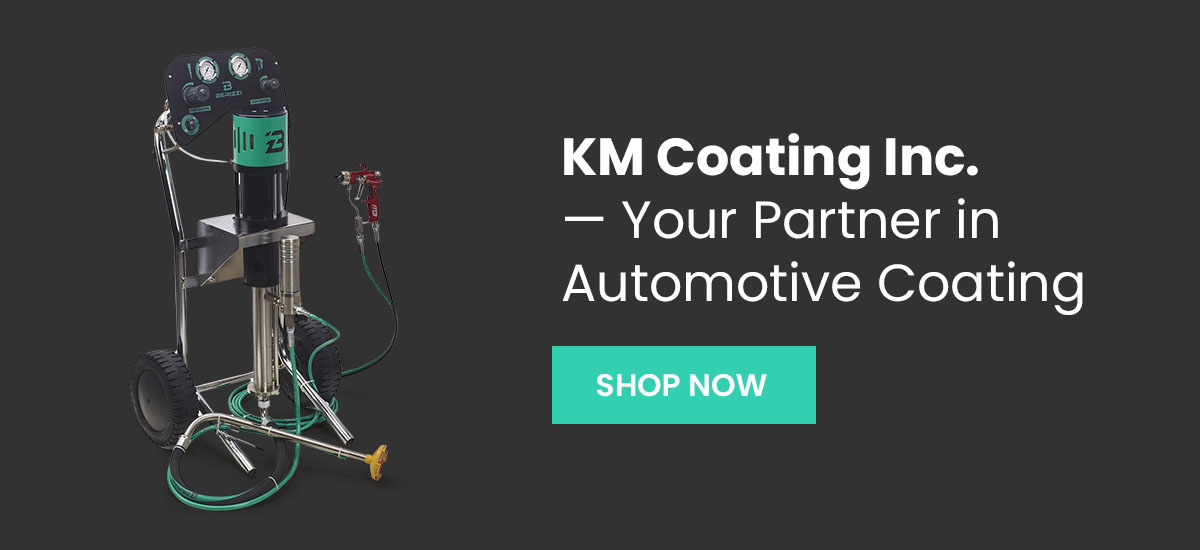
Get Started With KM Coating Inc.
Investing in the best automotive spraying technology can help you achieve exceptional results. KM Coating Inc. has a wide range of professional automotive paint guns for sale — all designed to elevate your automotive coating processes. When you partner with us, you'll experience unmatched reliability, durability and performance in every spray. Start maximizing your efficiency and achieving superior finishes today with KM Coating Inc.

